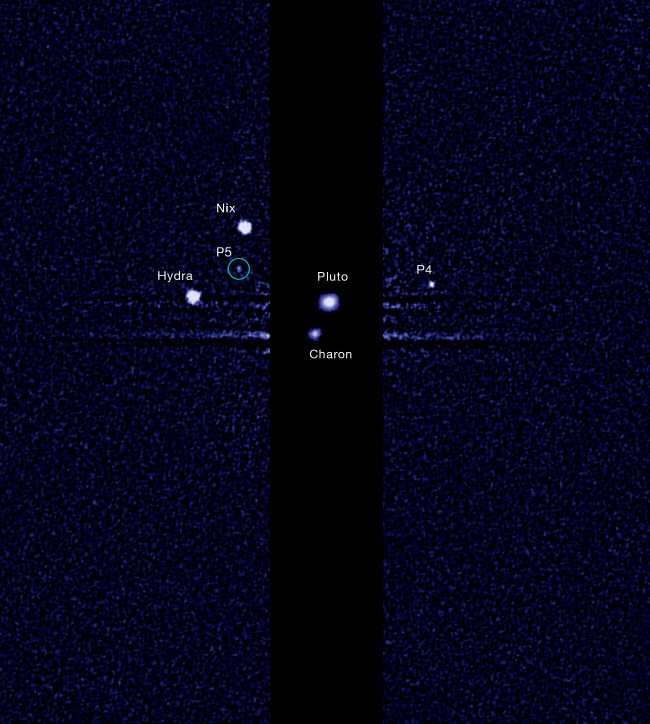The Hubble Space Telescope as seen from the departing Space Shuttle Atlantis. Image from Wikimedia Commons
Scientists using the Hubble Space Telescope have discovered a fifth moon circling Pluto, which could provide them with information on how the Pluto system formed and evolved.
Estimates put the new moon, known as S/2012 (134340) 1, or P5, as measuring 10km-25km across, making it Pluto’s smallest moon.
A team from Seti Institute in Mountain View, California, detected the moon, albeit as a faint speck, in nine separate sets of images taken by Hubble’s Wide Field Camera 3 during June and July.
Pluto’s four other moons are Charon (the largest), Nix, Hydra and P4. The moons are thought to have formed after an ancient collision between Pluto and an object, such as an asteroid, in the Kuiper Belt, a circular region populated with small bodies that lies beyond Neptune’s orbit.

Pluto and its five moons, with new moon (P5) circled in green. Image by NASA, ESA, and M Showalter (SETI Institute)